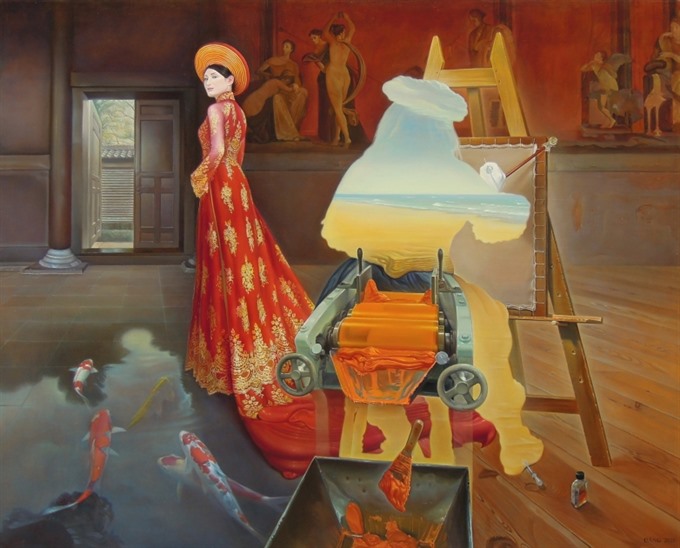 Life & Style
Life & Style

The secrets of canvas, brushes and palettes as well as special techniques of oil painting are revealed in a book released on Saturday in Hà Nội.
 |
| Scenic world: Invisible Vermeer, a painting by Nguyễn Đình Đăng, is selected as a cover of the book. |
HÀ NỘI — The secrets of canvas, brushes and palettes as well as special techniques of oil painting are revealed in a book released on Saturday in Hà Nội.
Entitled Kỹ Thuật Vẽ Sơn Dầu (Technique of Oil on Canvas Painting), the book by Nguyễn Đình Đăng explains basic and advanced techniques of painting.
It reveals the materials needed to make brushes, how to preserve oil paintings from becoming mildewed, tells the history of oil painting in the world and introduces the specific techniques of artists such as Rembrandt, Leonardo de Vinci and Van Eyck.
“It’s the first comprehensive book about oil on canvas published in Việt Nam,” said painter Lê Huy Tiếp.
“It’s a combination of more than 40 studies and essays written by painter Đăng, who has spent 40 years pursuing this genre,” he said.
Tiếp remarked that the book will provide necessary knowledge for students, artists, researchers and anyone interested in art.
Đăng was born in 1958 in Hà Nội. He started to draw when he was very young, around five years old. During the US bombing of northern Việt Nam, he was evacuated to the countryside for five years.
His family was very poor at that time. Even supplies of paper for students ran short. He had no access to proper art materials and his first painting, created around 1970 in oil colours, was a portrait of an European lady, which he painted on a piece of rough material cut from a bag for keeping rice. In spite of these hardships, he managed to develop good drawing skills.
At that time, being a creative painter was not a profession in Việt Nam, as painting was considered to be an instrument for political propaganda, like the mass media. He realised he would have to go abroad to develop his artistic abilities further. Being a brilliant student of mathematics and physics, he was able to study physics at Moscow State University from 1976-82 and completed his PhD in 1985 on the structure of nuclei.
In Moscow, he had the opportunity to visit many museums and art galleries. For a few years, he worked in Europe as a physicist, then he moved to Japan. He pursued his painting while simultaneously undertaking demanding work as a nuclear physicist. As an artist, he was self-taught, mostly through copying from reproductions of Vermeer, Boticelli and Velasquez. Starting in 1987, he joined various professional art associations in Việt Nam and Japan.
He has had many solo exhibitions in Russia, Việt Nam and Japan. Many of his works are in private collections in Austria, the UK, France, Germany, Indonesia, Italy, Japan, Netherlands, Sweden, Russia and Việt Nam. Currently, he works as a Vietnamese nuclear physicist at RIKEN, Japan’s largest research institution in a range of scientific disciplines. — VNS




